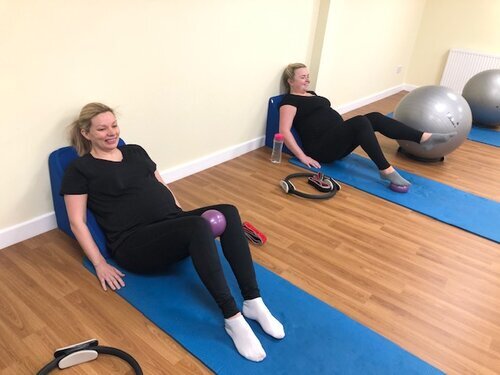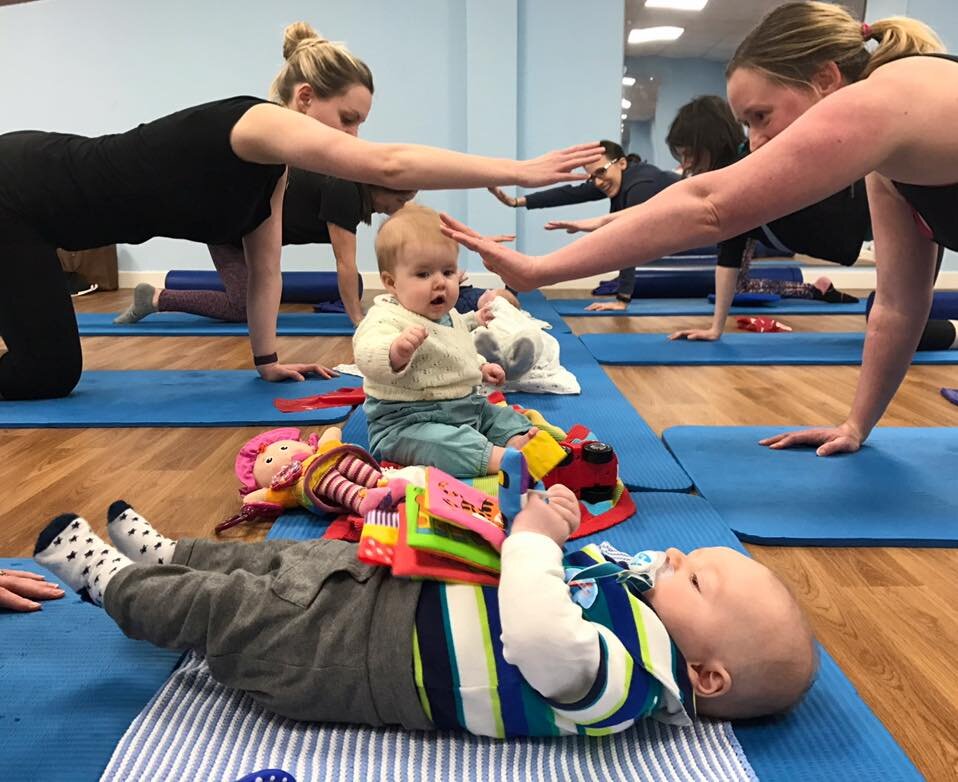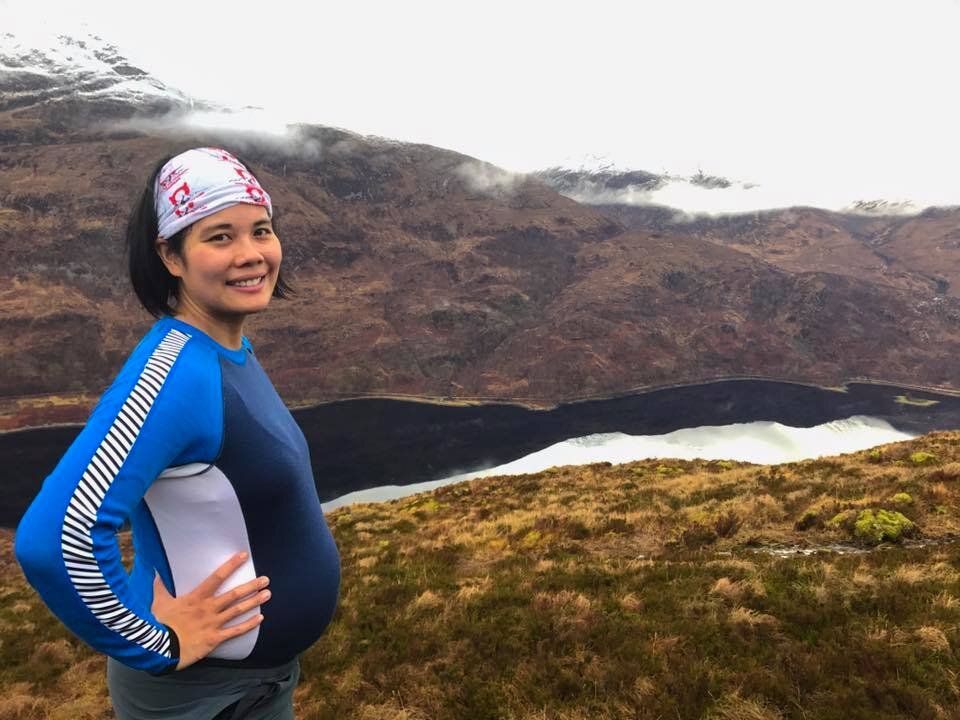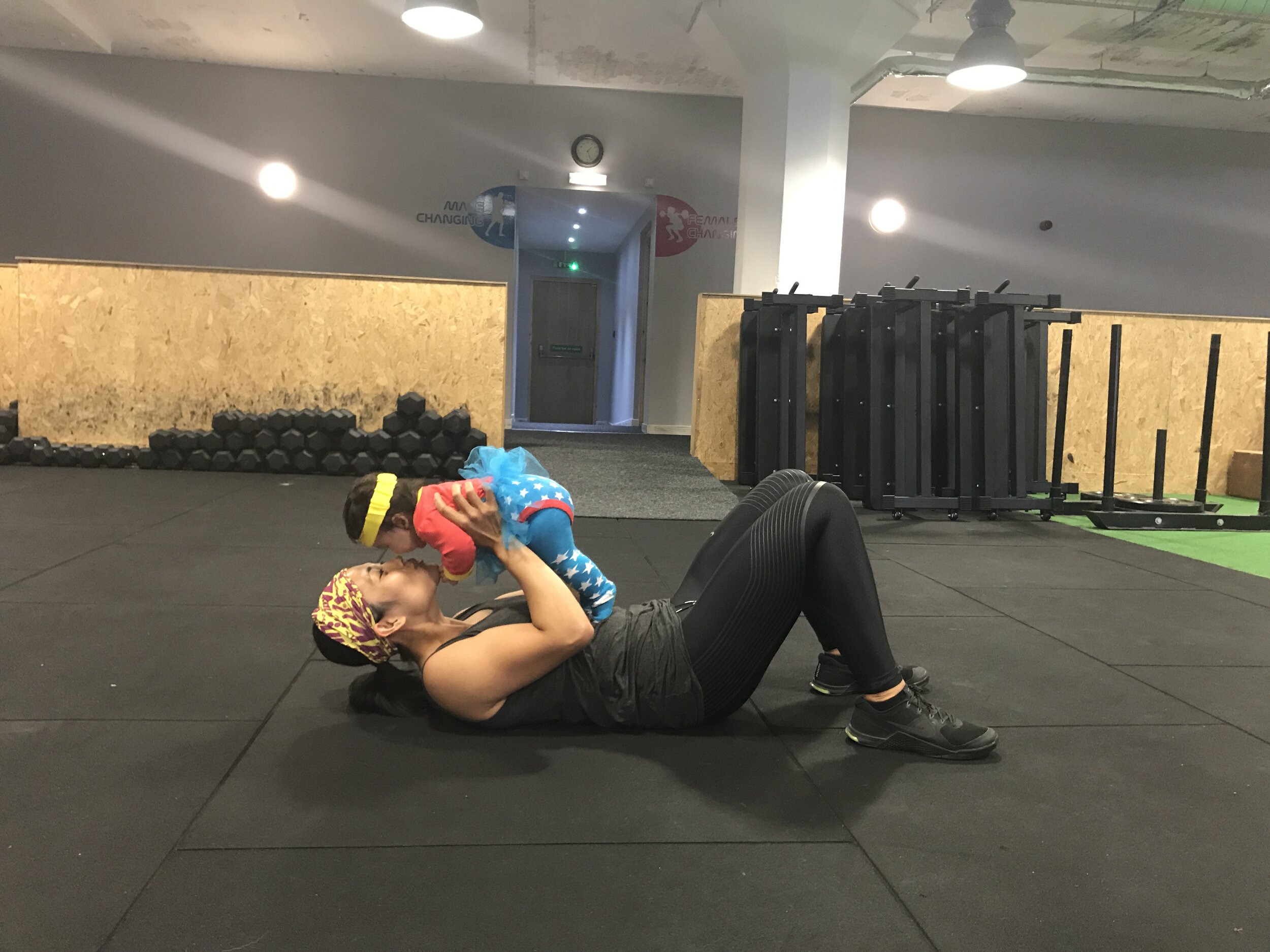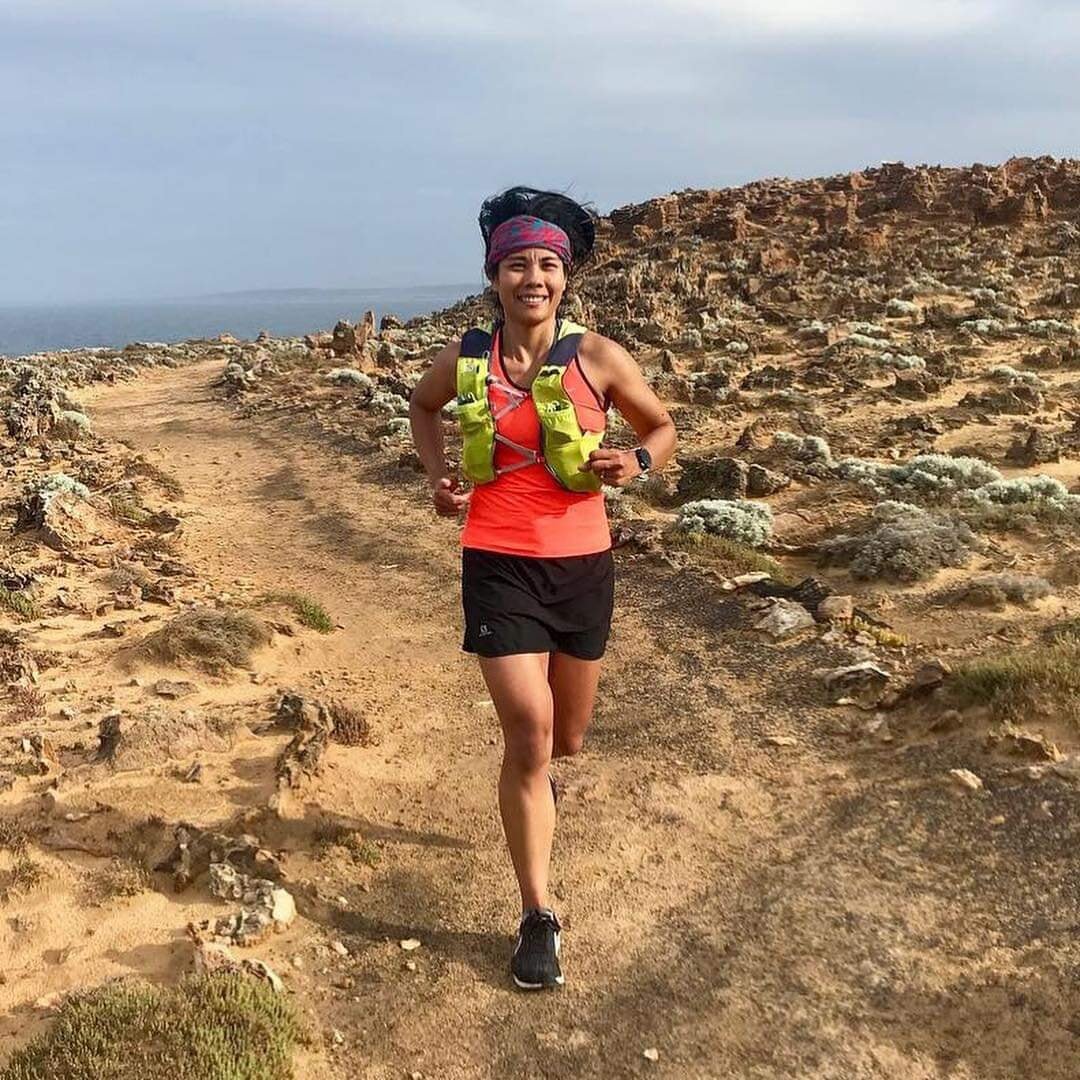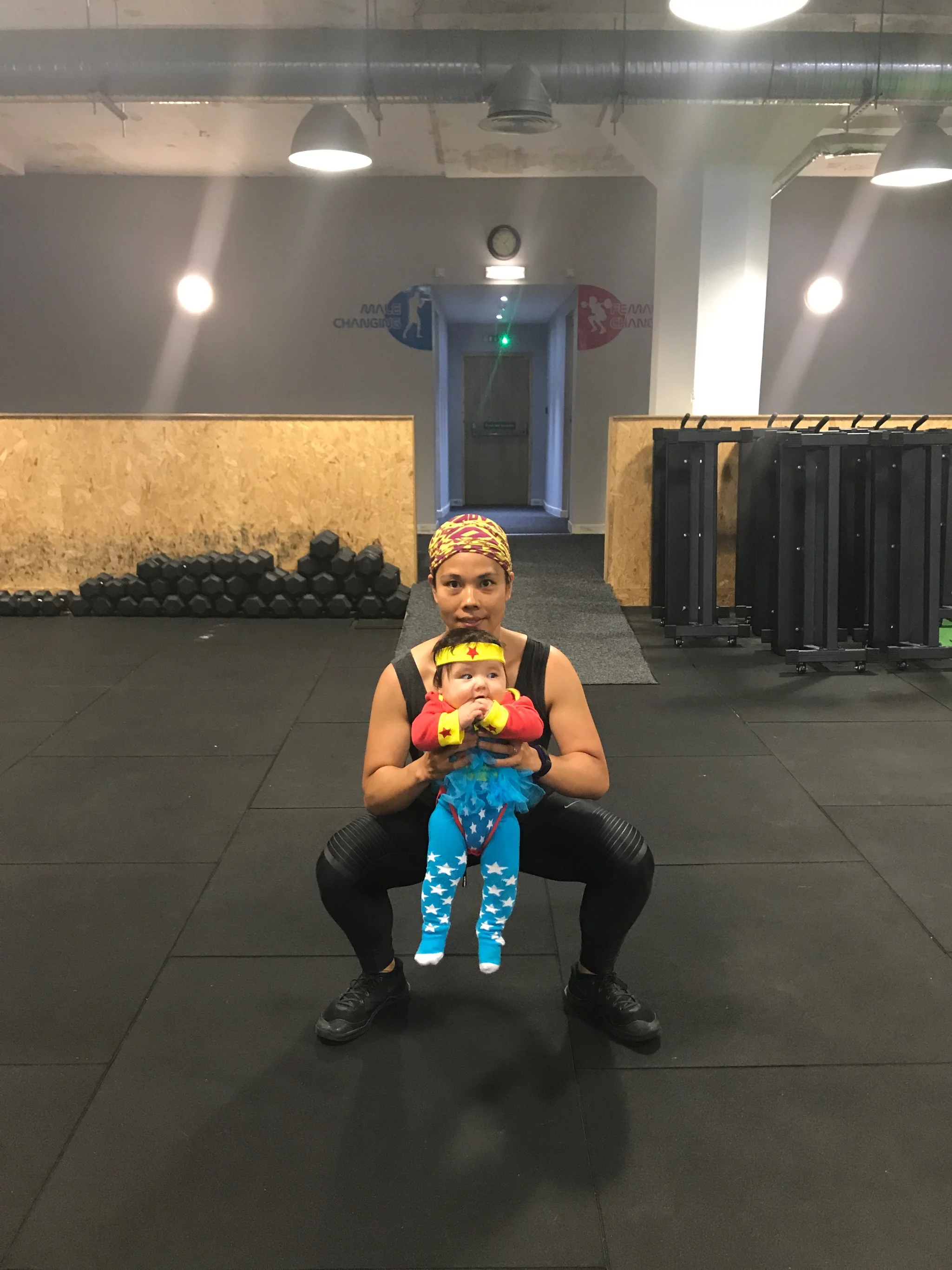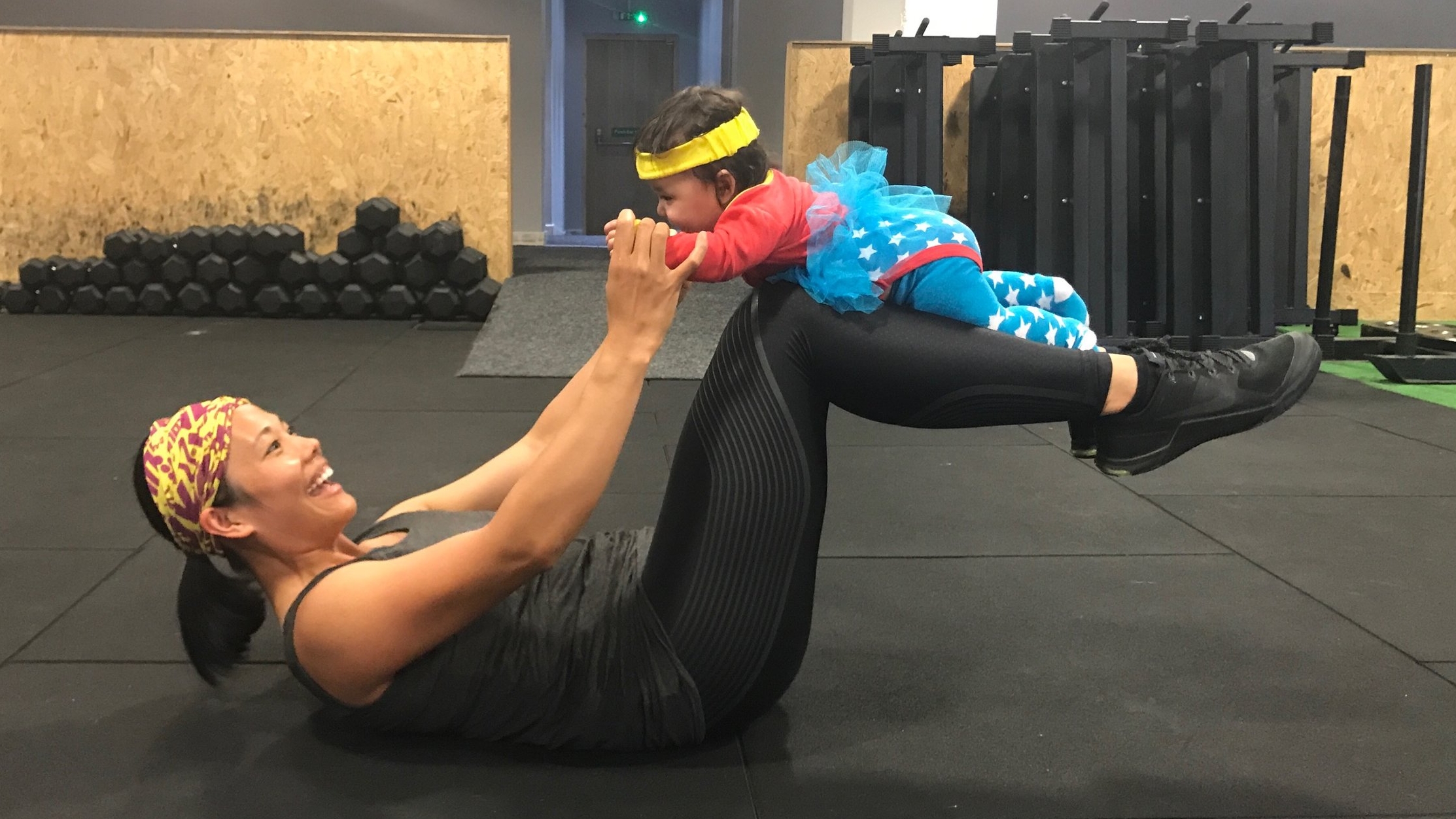Antenatal Pilates Classes at Physio Effect
Some exciting news! We have a NEW Antenatal Pilates class running in our studio within our Northside clinic at Borron Street. This physio-led Clinical Pilates class aims to prevent pregnancy related issues such as pelvic girdle pain (PGP), symphysis pubis dysfunction (SPD), posture related pain as well as a full body programme to prepare you for the birth of your child. During the class, you will be guided through an individualised programme relevant to your stage of pregnancy and any other issues discussed during your initial physiotherapy appointment.
WHEN: Wednesday evenings at 7PM from 21st October
**CLASS NOW FULLY BOOKED**
Please contact us below if you would like to be placed on our waiting list or if you wish to attend any of our other Clinical Pilates classes which will be a mixed group, but you will still be able to do an antenatal programme due to the bespoke nature of the class.
WHEN CAN I START?
As long as you have an uncomplicated pregnancy and your midwife/ doctor approves, you can begin from any time in your second trimester if you have no Pilates experience. If you have previous Pilates experience, you may begin earlier.
HOW DO I GET STARTED?
You will be required to have a 1:1 session with one of our physiotherapists before joining a class for the first time. During this appointment, your physiotherapist will be able to plan a bespoke Pilates programme for you based on your goals, requirements and stage of pregnancy. You will be introduced to the various Pilates props and equipment used during a class including the Pilates Reformer machine.
HOW MUCH DOES IT COST?
Antenatal Physiotherapy Appointment: £49
Single class rate: £25
6 classes: £120 (£20 per class)
12 classes: £220 (£18.3 per class)
You have flexibility to use the class blocks within the following time period:
● 10 weeks on a 6-class block
● 4 months on an 12-class block
WHAT HAPPENS IF I HAVE MY BABY BEFORE I USE UP ALL MY CLASSES?
You may use any remaining class credit towards our Crybaby Pilates Classes. This is our specialist Postnatal Pilates class which you may begin once you are at least 6 weeks postpartum after a non-complicated vaginal delivery or 8 weeks if you have had a C-section/assisted delivery with any complications.
CryBaby (Postnatal) Pilates Class
Having a baby during Coronavirus Lockdown!
Lockdown has made many things more challenging, none more so than giving birth. Here I spoke to one mum who had been attending our Antenatal Clinical Pilates classes up until the country shut down on the brink of a global pandemic.
Written by Mariam Kilpatrick, Physiotherapist and Clinical Pilates lead at Physio Effect
Lockdown has made many things more challenging, none more so than giving birth. Here I spoke to one mum who had been attending our Antenatal Clinical Pilates classes up until the country shut down on the brink of a global pandemic.
Hi Elisa, thanks for taking the time to share your experience with us about being pregnant and having a baby during lockdown. Can you firstly tell us a little bit about yourself and your family?
My name is Elisa and I come from a small village in the Italian Dolomites. I have been living in Scotland for the past 12 years since I came as an Erasmus student studying Environmental Engineering. I met my husband at the University of Glasgow. We now have a very fluffy dog named Leo and two beautiful children: a three year old girl called Joanna Sofia and a our son, Eric Antonio, who arrived this April. He is known amongst our friends and family as our "pandemic" baby!
When lockdown started I was 36 weeks pregnant.
Pregnant Elisa and daughter, Joanna (3)
At what stage of your pregnancy did you start our antenatal Pilates classes in our studio, how did you find it and what did you enjoy about it?
I started the antenatal classes when I was 20 weeks pregnant. I was playing squash twice a week before my pregnancy and I wanted to keep exercising. I felt having a desk job I really needed to keep moving, especially for my back as the months progressed. I had heard great things from friends about the antenatal classes at Physio Effect and when I joined I loved being given exercises by Raz specifically tailor-made for me and my stage of pregnancy. It was also fabulous to meet other mums to be and have a bit of time for myself (which is hard to get with a toddler, a husband and a dog!).
How did you find moving over to the virtual (Zoom) antenatal classes during lockdown?
Virtual Pilates Class
It was a good! Technology wise at work, I use videoconferencing a lot and during lockdown cameras got switched on much more, so it was easy enough. At first it took a bit of time to get organised: finding the right space so that my dog and toddler would not interfere, identify the right room to have physical space to do exercise but after that it was a great opportunity to be active from the comfort of your own home, without the need to travel or drive. I found Raz was able to keep an expert eye on us all the time and could correct me if necessary. I also thought I knew what I was doing having done a few classes at the studio already.
And you had a beautiful baby boy named Eric! What was your experience like having him during lockdown compared to your daughter Joanna?
I have to be honest, it was quite different and worrying at times compared to the first experience. However on reflection it has also been an invaluable family time that I have not had with Joanna. On the run up to the birth I started worrying about going to a hospital and the risk of contracting the virus, not having my husband there at all times and also what to do with our toddler, who would have needed someone to be with her if dad was to be with me in the birthing room. However when the day came, I laboured alone in the hospital and in a way it was better for Joanna not to see me distressed. At the hospital everyone was fantastic, trying to make me feel as supported as they could. I was alone for a few hours but I was really well looked after by nurses and midwives. My husband was with me in the birth room and after the birth I got sent home the day after so my stay in hospital was very quick. We had some truly family time, getting to know each other and in a way not stressing about visitors. It was only us and our new baby, which gave Joanna a chance to not get jealous of her wee brother but instead accept him as a new member, especially since, as she said, he was so tiny and cute!
Can you give us an insight with what life has been like during lockdown, having a newborn/toddler/dog/husband working from home?!
Definitely not the maternity leave I was expecting, meeting other mums in coffee shops and at baby groups. However I do believe it has been the best time we have ever had as a family, with no pressure to do anything a part from being together. Life moved at a much slower pace and the kids, the dog and I had lots of walks in the park, which has been great.
Elisa with daughter Joanna, Baby Eric and Leo the dog
How old was Eric when you had your postnatal physio appointment and how did you find doing it virtually?
Eric was 8 weeks old when I had my "virtual" assessment. I thought it worked very well. I did like the fact I carried out an assessment on myself, getting to understand under supervision how my body was responding to the birth of my second child.
What was your experience like doing the virtual Crybaby (postnatal) Pilates classes? Did you find it enjoyable and would you recommend it?
I really enjoyed again having the time for myself. Life does get busy now and cutting out a bit of time for yourself to feel good I believe is key. I really enjoined them and the progression to harder exercises. I also feel was fantastic having had the possibility to watch the recordings afterwards: I had Eric there with me during the classes and sometimes he needed attention so I could replay the class whenever I wanted, which was brilliant.
From Bump, Birth And Beyond…
Here at Physio Effect, we support mums to stay strong, fit and healthy throughout their pregnancy and into their motherhood journey. For more information on all our ante- and postnatal services, click below:
A Guide On Returning To Running After Pregnancy
Running after having a baby is the obvious choice for many new mums wanting to begin or return to exercise. There are however some important things to consider in order to safely return to running and any other high impact exercise after having your baby. Returning too soon can cause long term implications including pelvic floor dysfunction, pelvic girdle pain and other musculoskeletal issues. This guide outlines the impact pregnancy and birth has on your body and important healing time-frames you must be aware of before returning to running. You will also find 2 free Pilates strength videos to give you an idea of the kinds of exercise that will help prepare your postnatal body for the demands of running
Written by Mariam Kilpatrick - Physio, Clinical Pilates Instructor, Mum and Ultra-marathon runner
One of the most common questions I hear from new mums after giving birth is, “When can I start running?” A fair question, as it’s one of the simplest forms of exercise to fit in around your baby, no gym membership required and a good way to burn off that extra baby weight. We’ve all been there.
There are however some important things to consider in order to safely return to running and any other high impact exercise after having your baby. Returning too soon can cause long term implications causing pelvic floor dysfunction, pelvic girdle pain and other musculoskeletal issues. This usually happens because you haven’t adequately rehabilitated your body following the huge stresses placed upon it during pregnancy and childbirth. Giving birth (either vaginal or C-section) can be considered equal to a major sports injury which would require the same attention, specific rehab and a graded return to any sport. It is just as important to work on muscles affected by pregnancy and childbirth (such as the pelvic floor and abdominals) as it is to work on the muscles around your knee if you’ve had a knee injury/surgery.
My baby is 6 weeks old now so I’m good to go…right?!
Healing of the body after childbirth goes well beyond the traditional 6-week timescale that many health professionals go by.
Did you know…
The levator hiatus, the opening between the levator ani muscles (which forms part of your Pelvic Floor) stretches and widens significantly during pregnancy and childbirth. This can take between 4-6 months to recover (Stær-Jensen et al 2015)
After a C-section, the abdominals only regains 50% of its original strength by 6 weeks postpartum and 73%-93% of original strength by 6-7 months postpartum (Ceydeli et al 2005)
Up to 30% of first time mums will experience urinary incontinence (Milsom et al 2004)
Up to 56% of new mothers between 3-6 months postpartum demonstrate pelvic organ prolapse where one or more of the pelvic organs (bowel, bladder or uterus) descends downwards to the vaginal opening (Bø et al 2017). This can result in incontinence issues and the feeling of heaviness/dragging in the vagina.
You can’t go wrong with strong!
Your Pelvic Floor is a hugely important part of your body. It is made up of layers of muscle and connective tissue. These layers stretch like a hammock from the tailbone at the back, to the pubic bone in the front. They support your pelvic organs and control your bladder and bowel movements. The front passage (pee hole), the vagina and the back passage (poo hole) all pass through the pelvic floor muscles. Throughout your pregnancy, your pelvic floor has carried the weight of your baby, the placenta and a 50% increase in blood volume! As such, this will greatly affect its ability to do its job properly compared to pre-pregnancy function. It is therefore vital to work on these muscles after having a baby, regardless of the type of birth you had (whether vaginal or C-section).
In the latter stages of pregnancy, the connective tissue or fascia between your outermost abdominal wall (your six-pack muscles) can thin out/stretch to allow for a growing baby bump. After giving birth, you can be left with a gap between the two sides and sometimes it can look like you are still pregnant i.e. the dreaded “mum-tum”. This is called a Diastasis Recti or abdominal separation, a common condition that causes a lot of grief for many mums. However, like any muscle in the body, these can be addressed and worked on with specific corrective exercises targeting your deep abdominals.
When you are running, multiple times your body-weight in the form of ground reaction force is produced on impact with the ground. This has to be absorbed and controlled by the tendons, muscles and joints in the legs. Strengthening the muscles of the lower legs and core help prevent injury and increase the muscles’ load bearing capabilities.
Guidelines for postnatal exercise progression
Week 0-2: Walking, pelvic floor muscle strength and endurance exercises, basic abdominal exercises
Week 2-4: Introduce functional body weight exercises such as squats and lunges
Week 4-6: Introduce low impact cardio such as static bike, rowing machine or X-trainer
Week 6+: Progress to resistance training such as Pilates for pelvic floor/core and weights training
Week 12+: Graded/progressive return to running (e.g. Couch to 5K)
Some expert physiotherapists have developed a free guidance to help health and fitness professionals who work with postnatal runners which can be found here.
Postnatal Pilates
Pilates is a great form of rehabilitation to target the working relationships of your pelvic floor and core muscles (abdominals and diaphragm) especially in the first few months after having your baby. The benefits of Pilates include:
Strengthening your Pelvic Floor
Targeting your deep abdominal muscles to help heal Diastasis Recti (abdominal separation)
Addressing muscle imbalances that may be contributing to lower back pain or pelvic girdle pain
Targeting postural muscles of the back, neck and shoulder girdle
Postnatal Pilates Class at Physio Effect
Pilates for Runners
Try these free sample routines for strengthening your legs and gluts:
Pilates legs workout
Pilates Gluts Workout
We Want To Help You Get Your Body Back On Track
Physio Effect specialises in helping mums recover their health, fitness and confidence after having a baby. Our Cry-Baby Pilates classes where new mums attend with their babies has been a great success and very popular!
Want to read some REVIEWS about our classes from other mums? Click the links & read below: Yell.Com Reviews or Facebook Reviews
The cry baby Pilates classes led by Mariam were an absolute highlight of my maternity leave. They offered important rehab for all the changes to my body left by pregnancy and a c-section and the strengthening work got me back safely running sooner than I expected - yay! The classes were warm, friendly and supportive and my baby Helena loved meeting the other babies too (as well as getting cheeky cuddles from Mariam). Couldn’t recommend more highly to new mums!
Katherine C via Facebook reviews
I’ve recently completed 2 blocks of Crybaby Pilates with Mariam & would highly recommend it for postnatal recovery. Mariam was great at making you feel relaxed, gradually building up the intensity of the exercises over the weeks so it wasn’t too daunting in the beginning. I liked how the exercises also allowed you to interact with your baby. The classes are small enough that you get the opportunity to get to know the other mums & babies, which helps you feel completely at ease in the class too. I now feel back to my pre-baby self & body, ready to start running & hitting the gym! Thank you!
Keri. L.K via Facebook reviews
Seek Help & Advice Sooner Rather Than Later
As with everything in life, there isn’t a one size fits all when it comes to returning to running after pregnancy. Factors that need to be considered include:
Type of birth you had; was it a straightforward vaginal birth, a vaginal birth with complications such as forceps delivery/episiotomy/tears, a C-section? The timescales may be different for each case!
Previous level of exercise (e.g. were you a runner before pregnancy?)
Experiencing symptoms of lower back pain, pelvic or pubic pain, leakage and/or feeling of vaginal heaviness (which could be a sign of pelvic organ prolapse), coccyx/tailbone pain (which could be a sign of a hypertonic or tight pelvic floor)
Are you currently breast-feeding? Pregnancy hormones stay in the body for about three months postpartum, continuing to loosen joints, muscles, tendons and ligaments as they did in preparation for delivery. For those breast-feeding, hormones can still have a loosening effect even months after you stop.
Lifestyle changes such as sleep deprivation, lack of routine, demands of breastfeeding and altered eating habits which can cause energy deficiency and fatigue.
If you are unsure, it is advisable to seek help from a specialist trained physiotherapist or a pelvic health practitioner.
If you would like to chat to one of our physiotherapists you can use the link below to book an appointment. Or if you prefer send us a message with any questions you have and we will get back to you as soon as we can.
Thank You
Thanks for taking the time to read this guide, we hope you find it useful. Please share with anyone else who might benefit and if you have any questions comment and let us know. Please subscribe for regular updates and advice on everything health and fitness related - Zero spam promise.
Postnatal Pilates at Physio Effect
Antenatal Exercise; What the Guidelines & Evidence Say by Raz Leonard
For over a year I’ve been enjoying teaching two Antenatal Pilates classes at Physio Effect and, from the start, the classes have been fully subscribed. Many of the women tend to come from Health Care professions themselves and know the benefits of exercising during pregnancy. I am always surprised at how many old wives’ tales are out there and how many women remain inactive or stop physical activity during this crucial time. I plan to summarise some recent evidence-based reviews on the topic so that the facts can be divided from fiction.
For over a year I’ve been enjoying teaching two Antenatal Pilates classes at Physio Effect and, from the start, the classes have been fully subscribed. Many of the women tend to come from Health Care professions themselves and know the benefits of exercising during pregnancy. I am always surprised at how many old wives’ tales are out there and how many women remain inactive or stop physical activity during this crucial time. I plan to summarise some recent evidence-based reviews on the topic so that the facts can be divided from fiction.
The evidence shows that exercising during pregnancy is completely safe and in fact improves the chance of a healthy baby and mum. There are some exceptions to each rule which is why it is important to check with your midwife/ health care practitioner first and exercise with someone trained to adapt a programme to you. More detail of this evidence is presented below.
The first publication I wanted to share is by the UK Chief Medical Officers (2019) and based on best available evidence. The infographic summarises the key points however you can access the full report via this link.
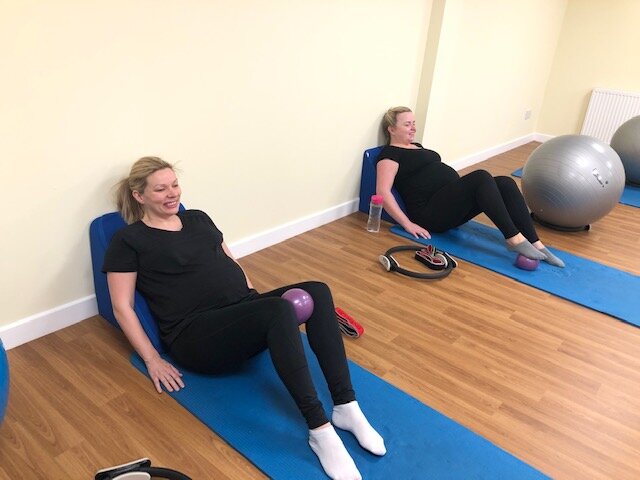
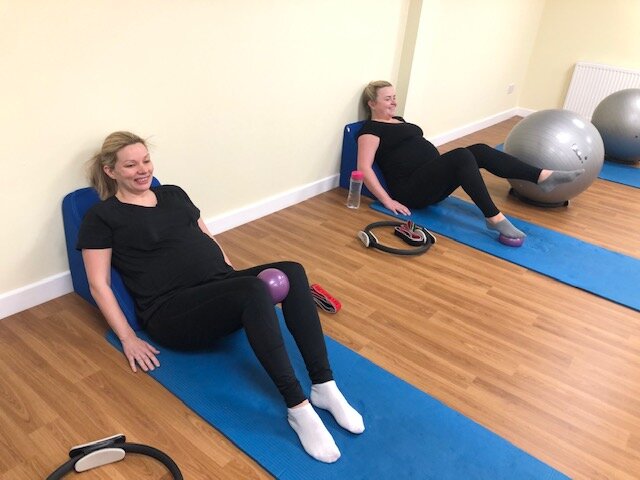
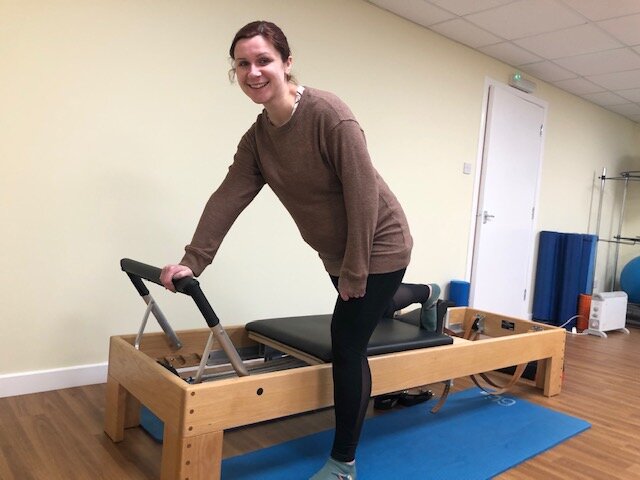
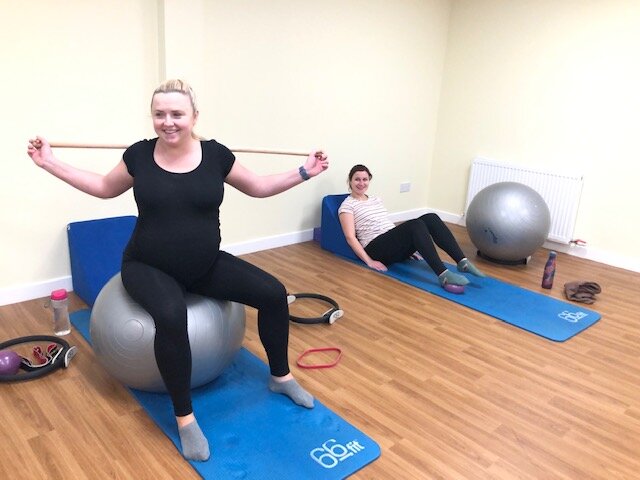
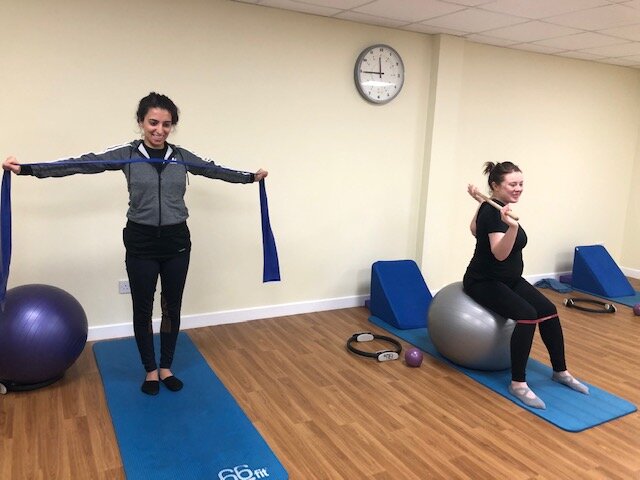
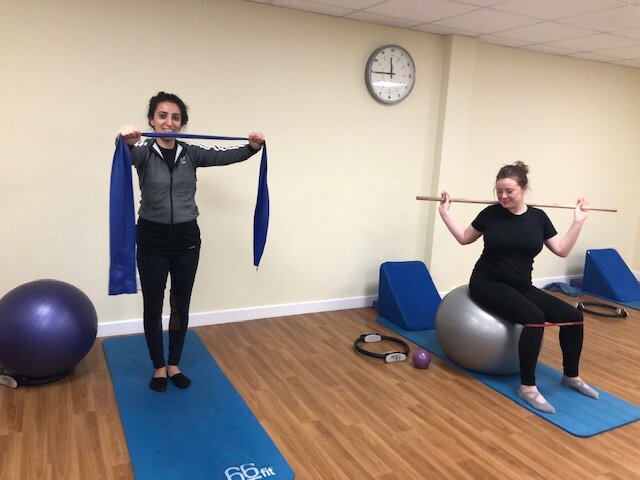
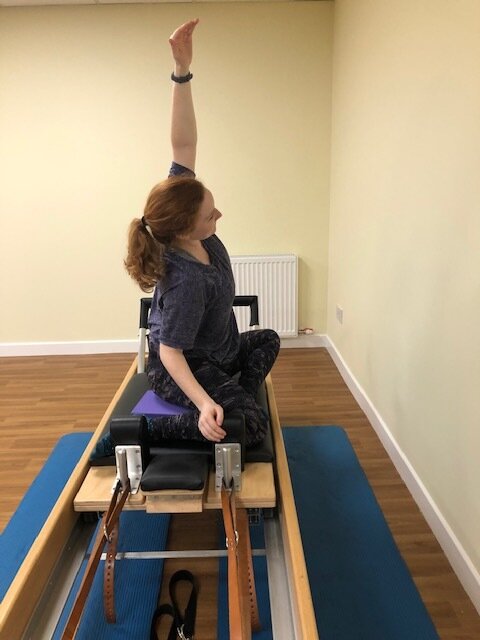
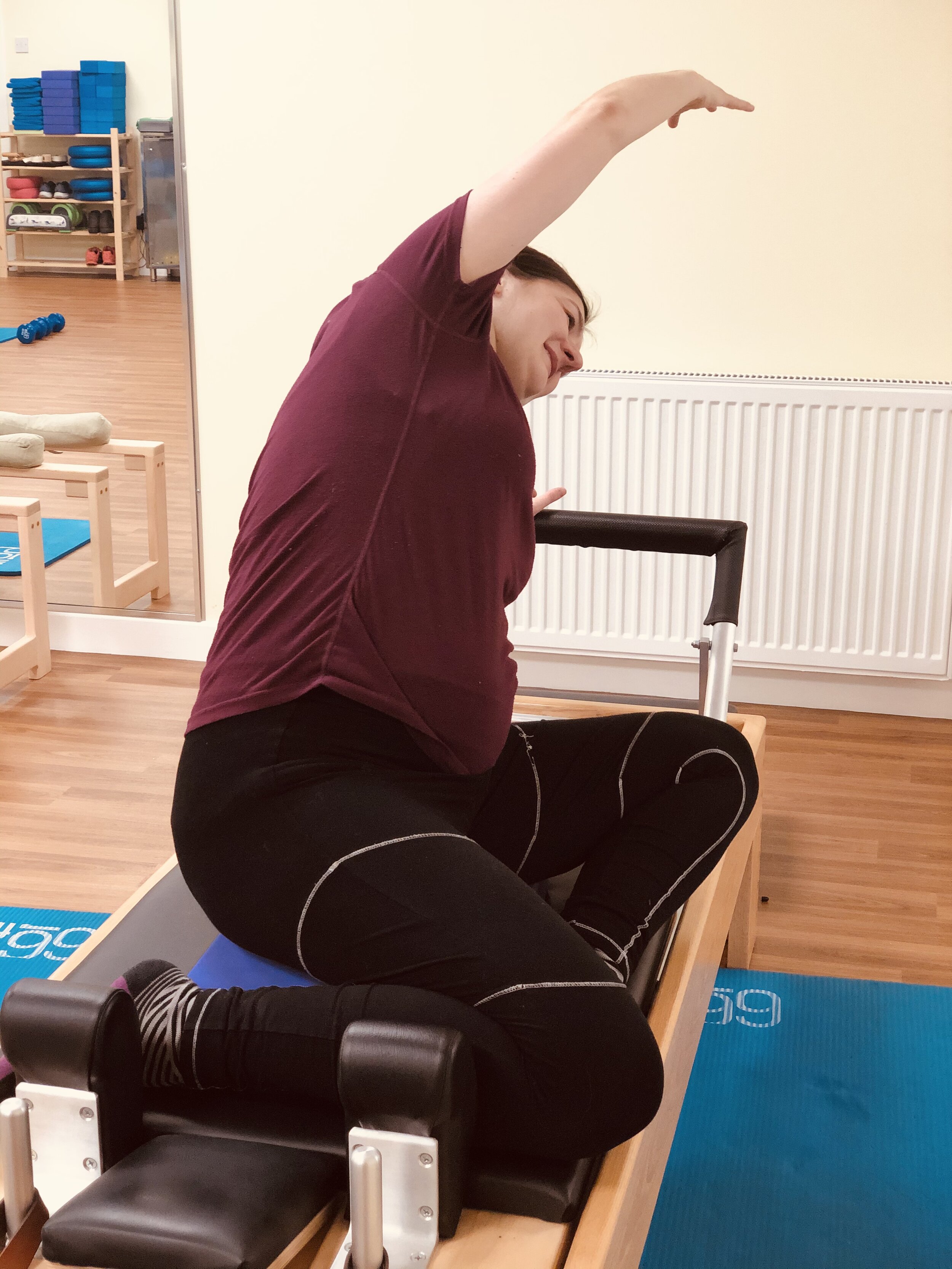
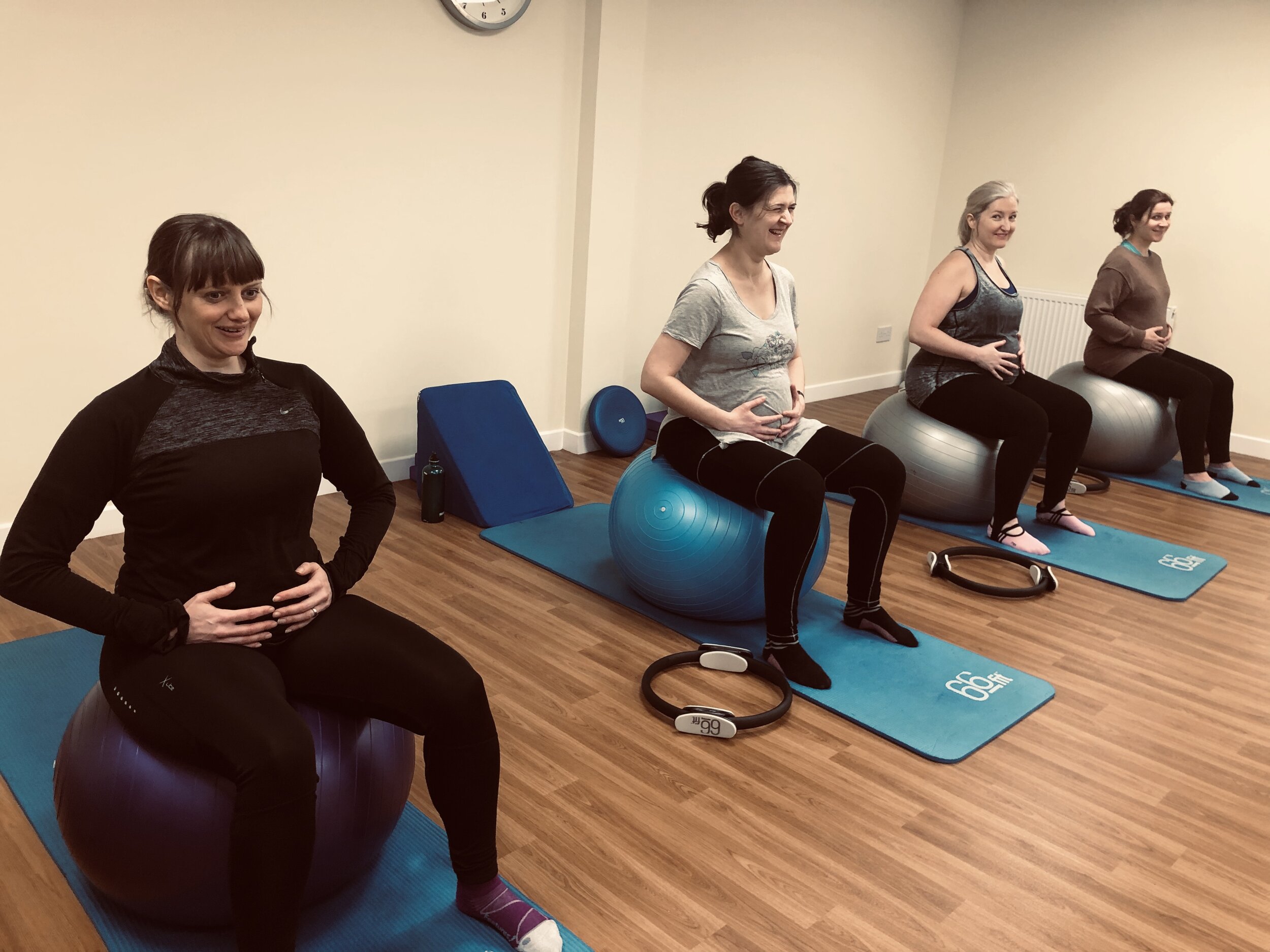
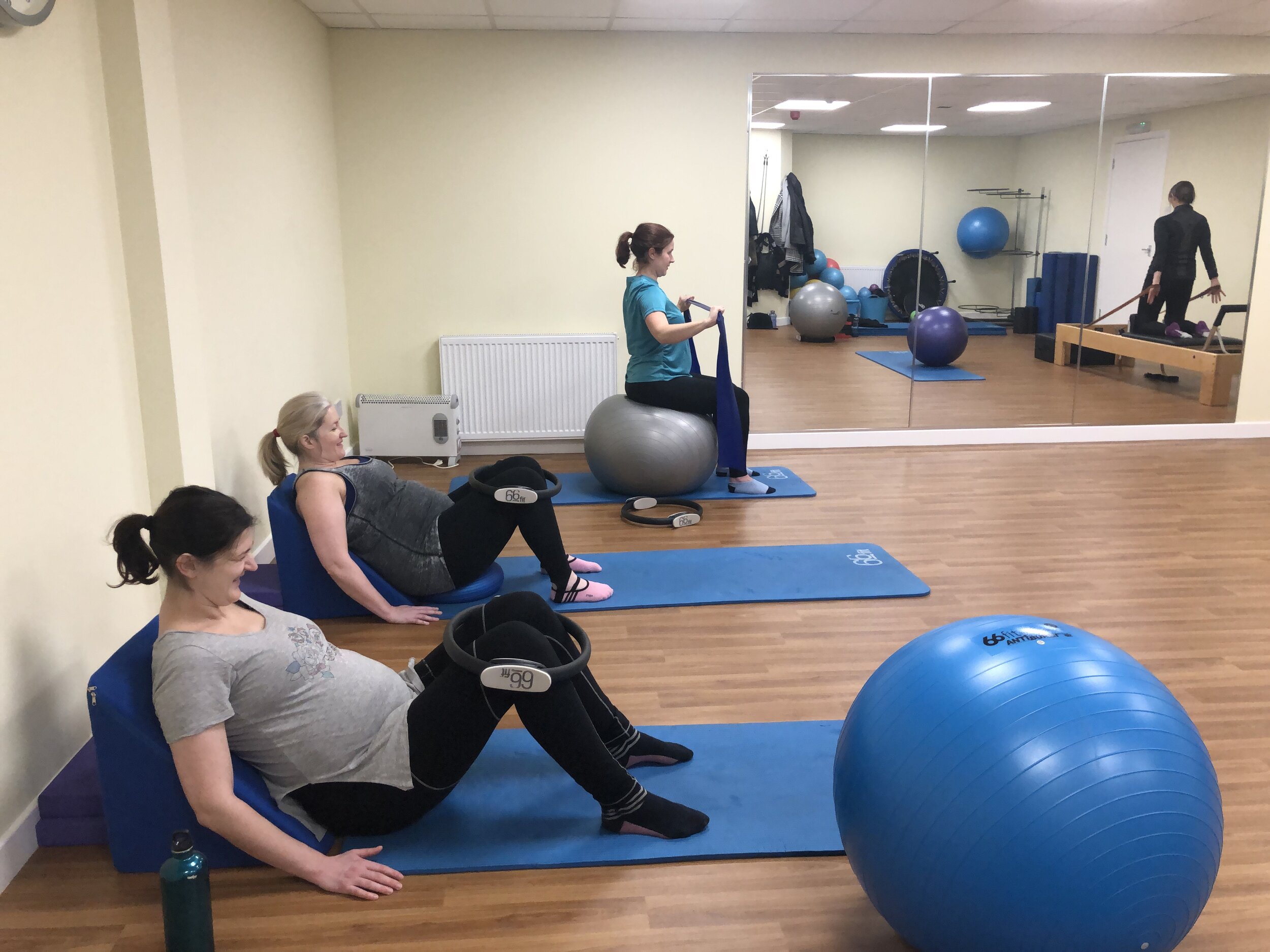
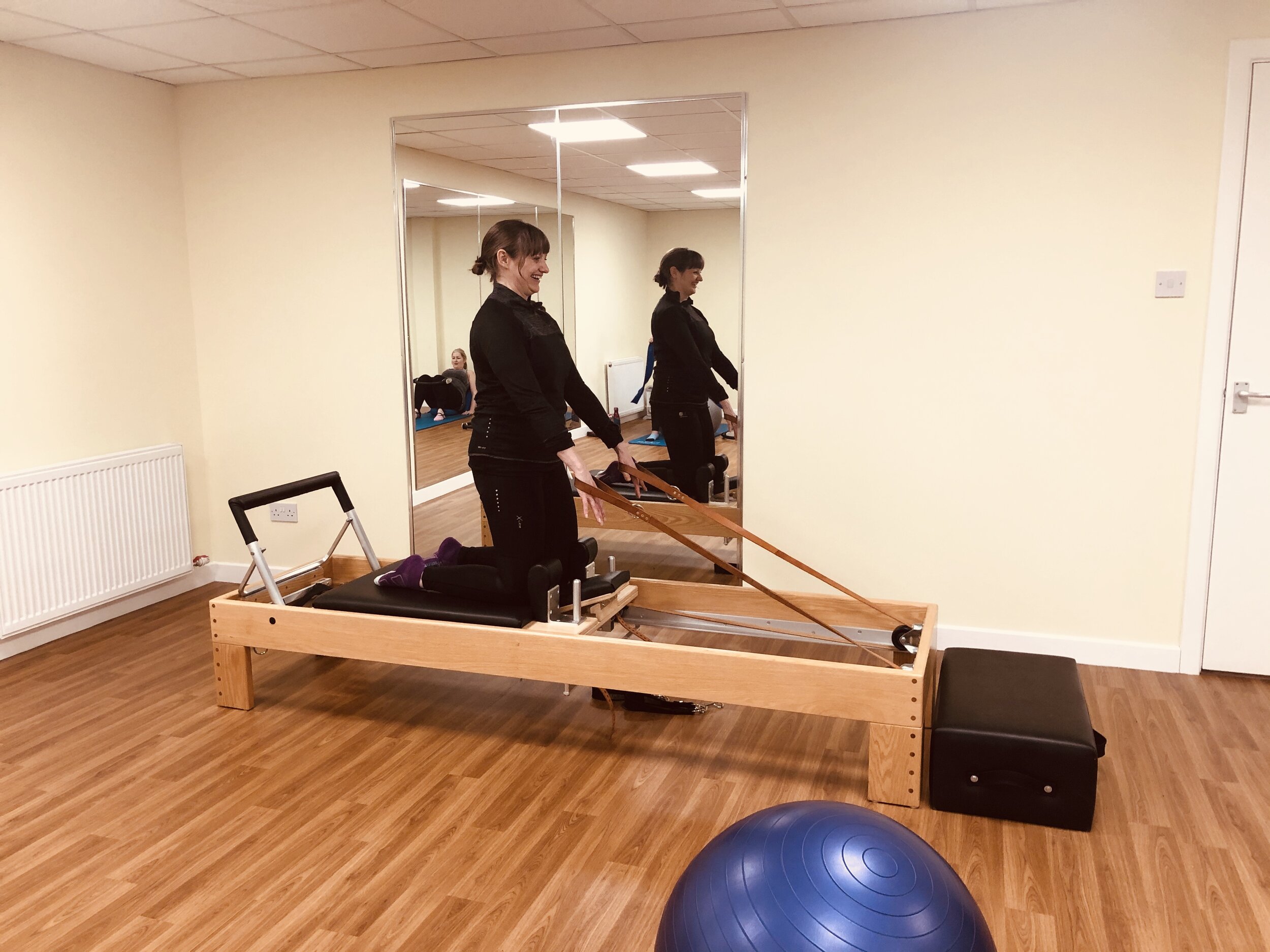
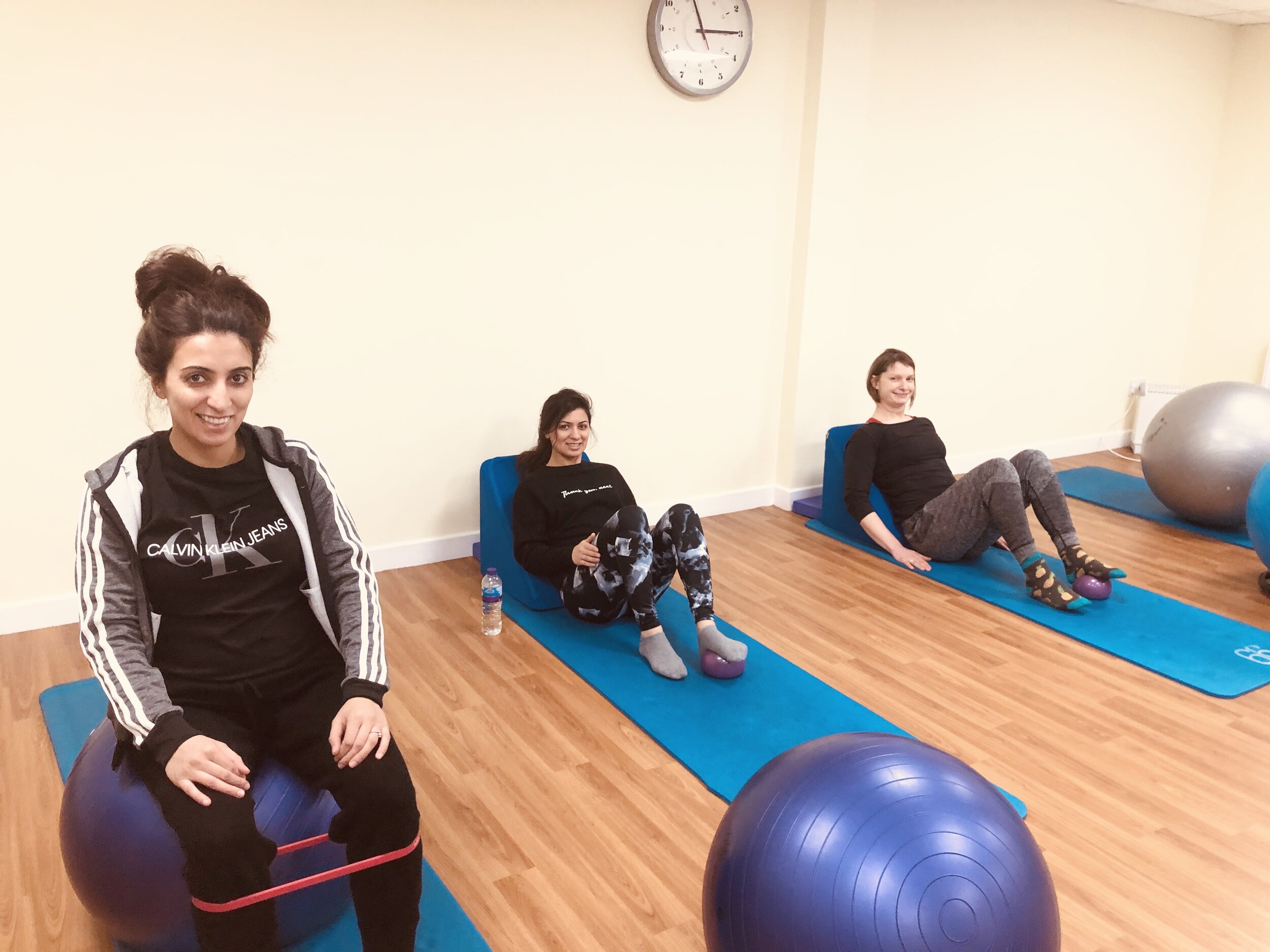
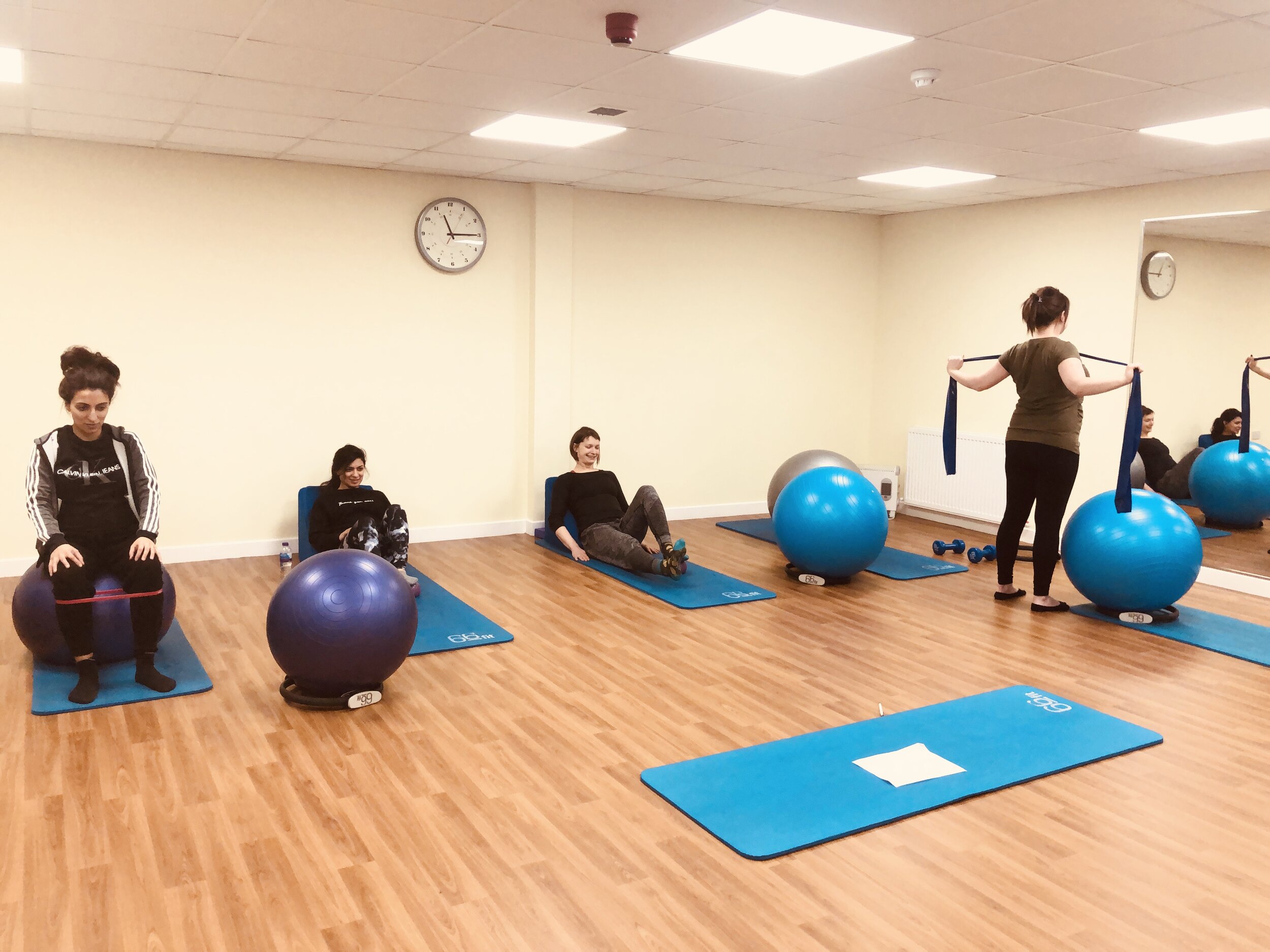
References;
Mottola MF, Davenport MH, Ruchat S, et al
2019 Canadian guideline for physical activity throughout pregnancy
British Journal of Sports Medicine 2018;52:1339-1346
Smith R, Reid H, Matthews A CMO Physical Activity Expert Committee for Physical Activity and Pregnancy, et al
Infographic: physical activity for pregnant women
British Journal of Sports Medicine 2018;52:532-533.
The report states that exercise during pregnancy has been shown to reduce high blood pressure and improve cardiovascular fitness. In addition, it can lower the risk of pregnancy related diabetes and gestational weight gain.
My favourite most recent ante natal exercise paper is “2019 Canadian guideline for physical activity throughout pregnancy”. A group of experts in the field have summarised their recommendations and highlighted the evidence they have to back these up as well as writing a detailed list of who should seek further advice before beginning an exercise program. See this link to read the paper in full.
Below is a summary of their main findings.
‘Strong recommendation’ and have ‘moderate’ quality evidence to support this. (The reason they have said the evidence is ‘moderate’ is because it can be challenging to get enough high quality studies that have enough people in them and are designed robustly to back up their statements.)
All women with normal pregnancies should be active throughout.
At least 150 minutes of moderate level physical activity should be accumulated to achieve these health benefits and reduce pregnancy complications
Accumulating this activity over a minimum of 3 days a week is recommended, however daily activity is encouraged.
Higher evidence and so can be seen as an agreed fact (This is a ‘strong recommendation’ with ‘high’ quality evidence, which is great news for exercising mums to be!):
The types of exercise recommended includes a variety of aerobic and resistance training. Stretching and yoga can also be beneficial.
Common practice however seen as ‘weak recommendations’ as have ‘low-quality’ evidence to back them up:
Women should be taught the correct technique for pelvic floor muscle exercises and carry these out daily to reduce the chance of continence issues.
Women who experience nausea, light-headedness or feel unwell when exercising flat on their back, should modify their exercises to avoid this position.
Antenatal Classes at Physio Effect
Our antenatal class offered at Physio Effect incorporates the above guidelines by contributing to the recommended exercise volume & frequency. Stretching, resistance and pelvic floor exercises are given under guidance by a trained physiotherapist. In addition, exercise position is modified with use of equipment such as a foam wedge and the Pilates reformer. It’s also a great way to meet other mums to be. Please click here for details on booking the class.
Note that we also offer a post-natal program which you can bring your baby along to. This is designed to help restore your body and gently bring to back to the correct level of exercise. Find out more about our CryBaby Pilates classes here.
Our antenatal Pilates class is a bespoke class, individually designed for each person who attends. Clients will be assessed by a physiotherapist who will design and teach the class. For example, the program can help with any musculoskeletal injuries and pregnancy related issues such as pelvic girdle pain. In addition, stage of pregnancy, pelvic floor exercises and safe positions for exercise will be incorporated into this programme.
New Mummy Struggles: Exercise after Pregnancy
How one of our Physios managed getting back to fitness alongside the challenges of a new baby!
After giving birth to my first baby five months ago, life had changed as I knew it. Sleep deprivation… endless feeds… nappy changes… How does exercise fit into the picture?
I had always been a fit and active person, exercising 4-5x a week and continued to exercise right up until four days before my daughter was born. Before I knew it, I had this tiny human completely dependent on me. I felt like there was no time for anything else. Not long after I gave birth, we attended a family wedding. A family member commented that I had put on weight since having a baby and decided it was appropriate to tell me to stop eating junkfood. It was at this point I knew I had two choices: 1. Wallow in self-pity and never leave the house again 2. Find the motivation to do the things I enjoyed before having my baby. I chose the latter.
Since giving birth, I knew my body was no longer the same. I realised this after I came home from hospital and a 10-minute walk around the park felt like a marathon. As a physiotherapist who works with a lot of ante- and postnatal women, I am lucky to have the background knowledge on the human body after birth. I knew I couldn’t just jump back into what I was previously doing pre-baby. It was going to take time and patience. For the first six weeks, my exercise consisted of pelvic floor and abdominal exercises shown to me in hospital. This was all well and good when you are advised to do them every few hours, but when you’re dealing with a brand new baby; it’s the last thing on your mind! I therefore incorporated these exercises with a task I was doing constantly throughout the day - and that was feeding my baby (which was every 2-3 hours!) Every time I sat down to feed her, I made myself do them. I also went on daily walks with the buggy, which helped my mental wellbeing just to get outside the house.
After my 6-week check-up, I saw a physiotherapist who assessed my pelvic floor function and measured my belly for a diastasis recti; a condition that happens during pregnancy when the abdominal wall separates. This causes a small gap above or below the belly button. To address this, I attended mother and baby Pilates classes. Pilates focuses on the working relationships of the muscles around your trunk. These include your abdominals, diaphragm, pelvic floor and back muscles – ideal after having a baby! Being able to bring my baby along to the classes also made it easier for me not having to worry about a babysitter.
At 12-weeks, I felt I was ready to begin higher intensity exercise. After we put the baby to bed at night, I would go for a light jog for 15-20 minutes and gradually increased this as I felt comfortable. Thankfully having a baby in the spring meant long daylight hours for me to head out. I also joined a mother and baby bootcamp-style class, which incorporated strength and resistance exercises as well as high intensity interval training.
Common post-pregnancy myths that need to be debunked:
It’s normal to wee myself a little bit sometimes because I’ve had a baby
False: Incontinence post-birth is a sign of pelvic floor dysfunction and could indicate a prolapse. It is important to get this assessed by a women’s health physiotherapist to avoid long-term problems.
It’s normal to have back or pelvic pain because I’ve just had a baby
False: You may be in pain because of muscle imbalances and weaknesses. Seek advice from your physiotherapist for treatment and exercises to address any issues.
I’ve had a C-section so I don’t need to strengthen my pelvic floor
False: Your pelvic floor, regardless of how you gave birth, has been through a lot! It has carried the weight of your baby, the placenta and a 50% increase in blood volume for 9 months. This will greatly affect its ability to do its job properly compared to pre-pregnancy function.
Doing lots of ab-crunches and “planks” will help me get a flat tummy
False: These types of exercises should not be performed early on after birth as they cause excessive force on the abdominal wall, which may actually increase separation. It is best to strengthen the deeper abdominal muscles first with Pilates-type exercises.
It is important to remember that every woman is different. Exercise timescales are determined by your previous level of fitness, the type of birth you experienced and take into account any complications thereafter. Seek advice from your physiotherapist before commencing an exercise regime.
At Physio Effect we provide physiotherapy throughout your pregnancy journey and beyond. This includes ante- and postnatal assessment, treatment and physio-led Pilates classes. Our partners at Everyday Athlete Gym also run special mother and baby exercise classes.
Click here to see more about our ante- and postnatal services here at Physio Effect
One of our physios Mariam Kilpatrick with wonder-baby Aria
Crybaby Classes: Post-Natal Pilates Classes at Physio Effect!
Our Post-Natal Pilates class is designed for new mums from 6 weeks post-partum (8-weeks if by C-section) and onwards. The class is designed to help heal and strengthen muscles affected after pregnancy and labour such as your pelvic floor and abdominals.
Our Post-Natal Pilates class is designed for new mums from 6 weeks post-partum (8-weeks if by C-section) and onwards. The class is designed to help heal and strengthen muscles affected after pregnancy and labour such as your pelvic floor and abdominals. This class can also help manage back pain, pelvic girdle pain, improve continence and treat abdominal separation (diastasis recti). The added bonus is you are welcome to bring your baby along to the class while you exercise.
How do I get started?
For first-timers, you will be required to have a post-natal 1:1 assessment with one of our physiotherapists. This can be booked after you’ve had your 6 week check-up from your physician and given the all-clear to start exercising (usually a little longer if you've had a C-section). During this consultation, you will be able to discuss your pregnancy, labour and set some goals you’d like to achieve after having your baby. The physiotherapist will assess your pelvic floor and abdominal function and go over some basic, fundamental Pilates exercises in preparation to starting the classes. This appointment usually takes 30 minutes and you are welcome to bring your baby along.
When are the classes?
The classes are every Tuesday and Wednesday and run over a 6-week or a 12-week block. Each class lasts an hour. If you would like to start the classes in the middle of a current block, there is an option to pay per class depending on available spaces. The class number is small with a maximum number of 8 mums per class. Please get in touch to find out when the next block is.
How much does it cost?
Physiotherapy post-natal Assessment (if you are attending for the first time): £30
6-week block: £60
12-week block: £110
If you would like to pay per class, for example, if you cannot attend all classes in the block or if you are joining in the middle of an existing block, it would cost £12 per class depending on available spaces (we take a maximum of 8 mums per class).
Up until what age can I bring my baby?
You are welcome to bring your baby up until they are able to crawl/move about (which can be different for every baby, of course!). Otherwise you may find it difficult to do your Pilates exercises.
Are your facilities buggy friendly?
Our Pilates studio is located within the EDA Gym which has ramps for easy buggy access. The studio has ample space for your buggy and there is a lounge area and café where you can buy water/coffee/tea and snacks.
What other Ante- and Post-Natal Services do you provide at Physio Effect?
Here at Physio Effect, we have a number of therapists specially trained to help you through your pregnancy journey and after you've had your baby. Click here for more info on our other services
“Fantastic Pilates class that has helped me regain confidence, strength and my figure after having my son. Mariam is very skilled and knows exactly how to fine tune the exercises to suit individual needs. It is a particular bonus that you can take your baby along and Mariam is on hand to lend a cuddle if one of them is unhappy. There is also a cafe onsite where the group enjoy a coffee and a natter after the class. I would not hesitate to recommend”




